Succulents have gained immense popularity in recent years due to their unique and beautiful appearance, as well as their ability to thrive in various environments. However, like any other plant, succulents are susceptible to pests and diseases that can hinder their growth and overall health. It is crucial for succulent enthusiasts to be able to identify and treat these issues promptly in order to maintain the beauty and vitality of their plants.
Common Pests Found in Succulents
There are several common pests that can infest succulents, causing damage to the leaves, stems, and roots. One of the most common pests is mealybugs, which are small, white insects that feed on the sap of the plant. They can be found on the leaves and stems, and if left untreated, they can cause stunted growth and yellowing of the leaves.
Another common pest is spider mites, which are tiny arachnids that feed on the sap of the plant. They are often found on the undersides of leaves and can cause discoloration and webbing. Scale insects are also a common pest in succulents. They appear as small, oval-shaped bumps on the leaves and stems and can cause yellowing and wilting of the plant.
Symptoms and Signs of Pest Infestation in Succulents
It is important to be able to identify the signs of pest infestation in succulents in order to take appropriate action. Some common symptoms include yellowing or browning of leaves, wilting or drooping of stems, and the presence of webbing or sticky residue on the plant. Mealybugs can also leave behind a white, cotton-like substance on the leaves.
Spider mites often cause tiny yellow or brown spots on the leaves, as well as webbing between leaves or stems. Scale insects can be identified by the presence of small, raised bumps on the plant, which can be scraped off to reveal the insect underneath. If any of these signs are observed, it is important to take immediate action to prevent further damage.
Natural and Chemical Pest Control Methods for Succulents
There are several natural and chemical pest control methods that can be used to treat pest infestations in succulents. One natural method is the use of neem oil, which is derived from the neem tree and acts as a natural insecticide. It can be diluted with water and sprayed onto the affected plant to kill pests and prevent further infestation.
Insecticidal soap is another natural option that can be used to control pests in succulents. It works by suffocating the insects and can be sprayed directly onto the plant. Additionally, introducing predatory insects such as ladybugs or lacewings can help control pest populations by feeding on them.
Chemical options include insecticides specifically formulated for succulents, which can be applied according to the instructions on the product label. It is important to follow the instructions carefully and avoid using excessive amounts of chemicals, as this can harm the plant.
Prevention Tips for Succulent Pest Infestations
Prevention is key when it comes to pest infestations in succulents. There are several steps that can be taken to minimize the risk of pests affecting your plants. First and foremost, it is important to water succulents properly, allowing the soil to dry out between waterings. Overwatering can create a damp environment that is conducive to pest infestations.
Regular cleaning of the leaves and stems can also help prevent pests from taking hold. Wiping down the plant with a damp cloth or using a gentle spray of water can remove any pests or eggs that may be present. Additionally, quarantining new plants before introducing them to your collection can help prevent the spread of pests to healthy plants.
Common Diseases Found in Succulents
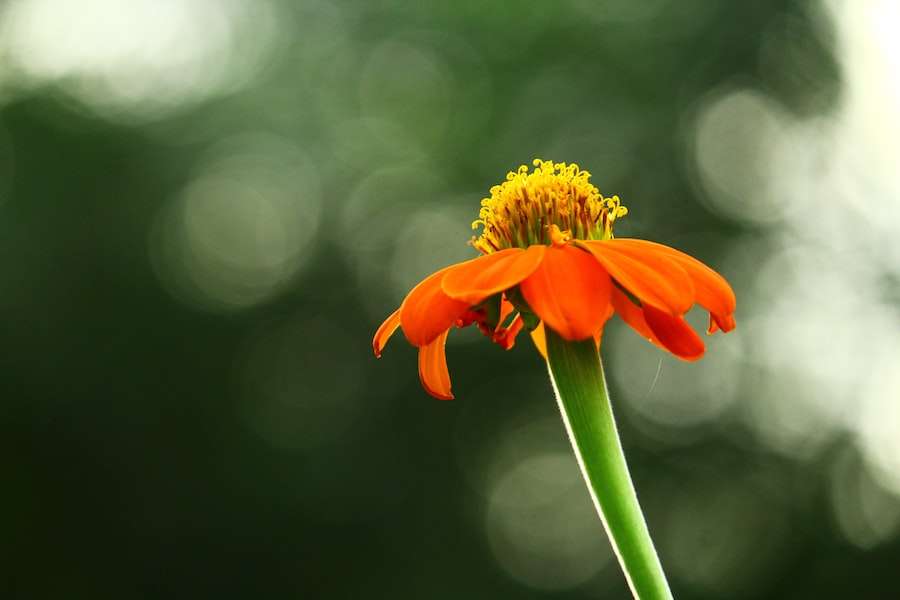
In addition to pests, succulents are also susceptible to various diseases that can affect their overall health. One common disease is root rot, which is caused by overwatering or poor drainage. It can cause the roots to become mushy and black, leading to wilting and eventual death of the plant.
Powdery mildew is another common disease that affects succulents. It appears as a white, powdery substance on the leaves and stems and can cause stunted growth and yellowing of the plant. Bacterial soft rot is also a common disease in succulents, characterized by soft, mushy spots on the leaves or stems.
Symptoms and Signs of Disease in Succulents
It is important to be able to identify the signs of disease in succulents in order to take appropriate action. Some common symptoms include wilting or drooping of the plant, discoloration or spots on the leaves, and soft or mushy areas on the plant. Powdery mildew can be identified by the presence of a white, powdery substance on the leaves and stems.
Root rot can be identified by the presence of black, mushy roots that have a foul odor. Bacterial soft rot causes soft, mushy spots on the plant that may have a slimy texture. If any of these signs are observed, it is important to take immediate action to prevent further spread of the disease.
Natural and Chemical Disease Control Methods for Succulents
There are several natural and chemical disease control methods that can be used to treat diseases in succulents. Fungicides specifically formulated for succulents can be used to treat powdery mildew and other fungal diseases. These should be applied according to the instructions on the product label.
Pruning infected areas of the plant can also help control the spread of disease. It is important to use clean, sharp tools and to disinfect them between cuts to prevent further spread of the disease. Soil sterilization can also be effective in controlling diseases, particularly root rot. This can be done by baking the soil in an oven or using a commercial soil sterilizer.
Prevention Tips for Succulent Diseases
Prevention is key when it comes to succulent diseases. There are several steps that can be taken to minimize the risk of diseases affecting your plants. First and foremost, it is important to provide proper drainage for your succulents. This can be achieved by using a well-draining soil mix and ensuring that the pot has drainage holes.
Avoiding overwatering is also crucial in preventing diseases such as root rot. Succulents are adapted to survive in arid conditions and do not require frequent watering. It is important to allow the soil to dry out between waterings to prevent the growth of fungi and bacteria.
Using sterile soil when repotting or propagating succulents can also help prevent the introduction of diseases. Sterile soil can be purchased or made by baking regular potting soil in an oven at a high temperature. Additionally, avoiding overcrowding of plants and providing adequate air circulation can help prevent the spread of diseases.
Conclusion and Final Thoughts on Succulent Pests and Diseases
In conclusion, identifying and treating pests and diseases in succulents is crucial for maintaining their health and beauty. By being able to recognize the signs of infestation or disease, succulent enthusiasts can take appropriate action to prevent further damage and ensure the longevity of their plants.
Natural pest control methods such as neem oil and insecticidal soap can be effective in treating pests, while introducing predatory insects can help control populations. Proper watering, regular cleaning, and quarantine of new plants are important prevention tips for pest infestations.
For diseases, using fungicides, pruning infected areas, and soil sterilization can be effective in controlling the spread. Proper drainage, avoiding overwatering, and using sterile soil are important prevention tips for succulent diseases.
By following these best practices, succulent enthusiasts can enjoy healthy and thriving plants for years to come.
If you’re interested in learning more about succulents and their relationship with humidity, check out this informative article from GirlsGist: “Do Succulents Thrive in Humid Environments? Exploring the Relationship Between Succulents and Humidity.” This article delves into the impact of humidity on succulent plants and provides valuable insights on how to care for your succulents in different environments. Whether you’re a beginner or an experienced succulent enthusiast, this article will help you understand the importance of humidity in succulent care. Read more
FAQs
What are succulent pests?
Succulent pests are insects or other organisms that feed on succulent plants, causing damage to the plant’s leaves, stems, or roots.
What are some common succulent pests?
Some common succulent pests include mealybugs, spider mites, scale insects, aphids, and thrips.
What are some signs of succulent pest infestation?
Signs of succulent pest infestation include yellowing or wilting leaves, sticky residue on the plant, webbing or silk on the plant, and visible insects on the plant.
How can I prevent succulent pest infestation?
To prevent succulent pest infestation, keep your plants healthy by providing proper light, water, and soil conditions. Inspect new plants before bringing them home, and isolate any infested plants to prevent the spread of pests.
How can I treat succulent pest infestation?
Treatment for succulent pest infestation depends on the type of pest. Some methods include using insecticidal soap, neem oil, or rubbing alcohol to kill the pests. It is important to follow the instructions on the product label and to treat the plant regularly until the infestation is gone.
What are some common succulent diseases?
Some common succulent diseases include root rot, powdery mildew, and black spot.
What are some signs of succulent disease?
Signs of succulent disease include discoloration or spots on the leaves, wilting or drooping leaves, and soft or mushy stems or roots.
How can I prevent succulent disease?
To prevent succulent disease, provide proper light, water, and soil conditions for your plants. Avoid overwatering and make sure the soil has good drainage. Keep your plants clean and free of debris.
How can I treat succulent disease?
Treatment for succulent disease depends on the type of disease. Some methods include removing affected leaves or stems, treating the plant with a fungicide, or repotting the plant in fresh soil. It is important to follow the instructions on the product label and to treat the plant regularly until the disease is gone.









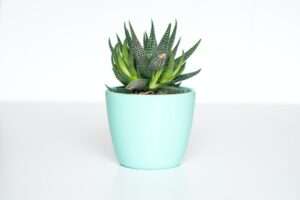
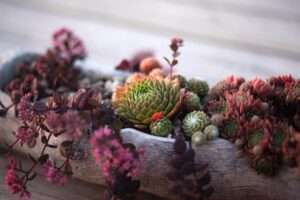




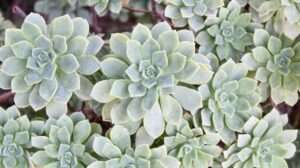
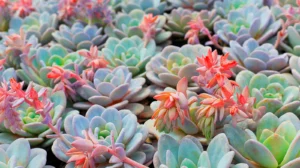
Add Comment